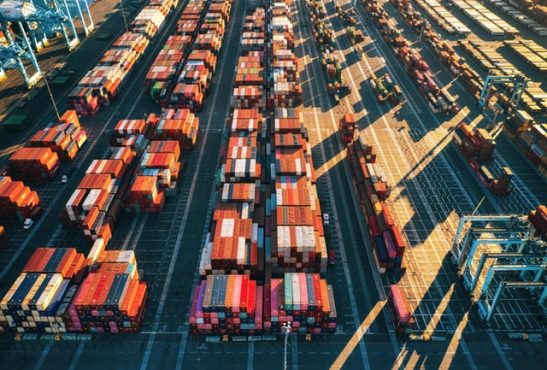- World merchandise trade volume grew 4.3% year-on-year in the first quarter, and a bigger increase is expected in the second quarter due to the steep decline a year ago
- In the first quarter of 2021, merchandise export volumes were up the most in Asia, followed by Europe, while the other regions showed varying rates of decline
- Merchandise trade value also rebounded strongly in Q1 due to a combination of increased quantities and higher prices
- Manufactured goods trade was up 16% year-on-year in the first quarter after falling 18% in the second quarter of 2020 due to the pandemic
Global merchandise trade continued to bounce back in the first quarter of 2021 from its collapse earlier in the pandemic, but the rate of recovery remains uneven, with Asia making the strongest rebound, according to the World Trade Organization (WTO).
World merchandise trade volume grew 2.1% quarter-on-quarter in the first quarter, which is equivalent to an annual rate of 8.7%, and picked up 4.3% compared to the first quarter of 2020.
A bigger increase is expected in the second quarter due to the steep decline in the same quarter a year ago, said WTO.
“Inequitable access to COVID-19 vaccines continues to pose the greatest threat to the economic outlook since a failure to protect all people regardless of income leaves populations vulnerable to further waves of infection,” said WTO.
The pace of recovery has diverged strongly across countries and regions. The volume of merchandise exports and imports in the first quarter rose to new heights in Asia, reverted to pre-pandemic levels in Europe and North America, and lagged in poorer, less industrialized regions such as Africa and the Middle East.
In the first quarter of 2021, merchandise export volumes were up in Asia (+21.0% year-on-year) and Europe (+1.9%). They were down slightly in South and Central America (‑0.1%) and North America (‑2.2%), and down more substantially in Africa (‑4.6%), the Middle East (‑8.4%) and the CIS (‑13.9%).
Merchandise import volumes were up year-on-year in all regions except Africa (‑0.9%) and the Middle East (‑2.7%).
“Overall, the trade recovery to date appears to be strongest in Asia and weakest in regions that export natural resources disproportionately,” WTO observed.
Merchandise trade in nominal US dollar terms also rebounded strongly in the first quarter, up 14% year-on-year, due to a combination of increased quantities and higher prices.
The sharp decline and subsequent rebound since the start of 2020 mostly reflects trends in manufactured goods trade, while other product categories made smaller contributions.
Prices of primary commodities fell during the first wave of the pandemic but have since risen steadily, contributing to the upswings in fuels, mining products and agricultural products trade. In May 2021, prices were up 194% year-on-year for fuels, 54% for metals, 45% for food and 26% for agricultural raw materials, according to IMF primary commodity price statistics.
The first quarter of 2021 showed strong year-on-year growth in all main product categories of merchandise trade, according to WTO estimates.
Manufactured goods trade was up 16% year-on-year in the first quarter after having fallen 18% in the second quarter of 2020 at the height of the pandemic. Trade in agricultural products was up 11% in the latest quarter while shipments of fuels and mining products rose 9%.
Sub-sectors of manufactured goods showed positive year-on-year export growth in the first quarter. Computers, telecommunications equipment, and integrated circuits all recorded robust year-on-year trade growth of between 25% and 28% in the latest quarter. In contrast, personal items such as footwear, handbags and clothing saw more modest increases of between 4% and 11%. Growth in exports of pharmaceuticals moderated to 8% in the first quarter after having spiked last year.
Despite the strong recovery of merchandise trade values in the first quarter of 2021, exports of many economies remain below their pre-pandemic peaks.
US exports increased by only 1% from January to April 2021 compared to the same period in 2019, while EU exports rose 10%. Exports of the Russian Federation remained below their level of two years ago (-8%) while those of China were up sharply (+31%). Some countries such as Zambia (+38%) benefitted from improved terms of trade over this period as metals prices rose nearly 50% since 2019, whereas others such as Namibia (-17%) did not.
Photo by Cameron Venti on Unsplash









